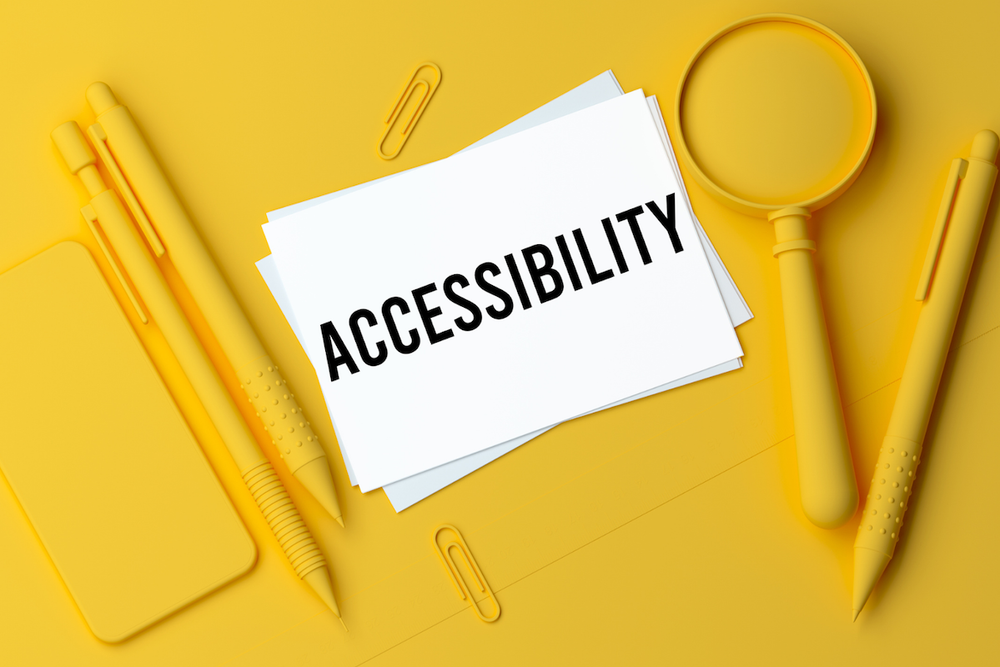Understanding accessibility as an opportunity
Digital accessibility is often reduced to the needs of people with disabilities - a fallacy that misses opportunities. In reality, it is about designing digital spaces in such a way that they are accessible and usable for everyone. We are talking here about a group of people that is far larger than many assume.
In Germany alone, over 47 million people live with a disability. That is almost 60% of the population. This also includes 7.9 million severely disabled people. But they also include temporary limitations - a broken arm, poor eyesight in old age - or language barriers. Digital accessibility is therefore not a niche topic, but a basic prerequisite for inclusion.
For companies, this means that taking digital accessibility seriously not only opens up new target groups, but also improves the user experience for everyone. An accessible website becomes a calling card for a modern, inclusive company - and that pays off.
What does digital accessibility mean?
Digital accessibility means that digital content and services are designed in such a way that they can be used by all people without restriction. This is based on the WCAG (Web Content Accessibility Guidelines), which define four central principles:
1. Perceptibility
Digital content must be accessible to all users. People with visual or hearing impairments in particular benefit from these measures.
Important actions:
- High color contrasts between text and background
- Alternative texts for images and graphics
- Subtitles and transcripts for videos and audio content
- Clear structuring of content for assistive technologies such as screen readers
- Ensuring that interactive elements such as buttons and menus are clearly recognizable
- Option to deactivate audio content that plays automatically
2. Usability
All interactive elements of a website or app must be operable for everyone, regardless of the input method.
Important measures:
- Websites must be navigable without a mouse, using only the keyboard
- Clear focus markers for interactive elements
- No uncontrolled automatic processes (e.g., animations that cannot be switched off or pop-ups without the option of closing them via a button)
- Alternatives for interactions that require special movements (e.g., drag-and-drop)
- Consistent and understandable navigation structure
- Possibility to pause or stop content
3. Comprehensibility
Digital content and user interfaces must be easy to understand.
Important actions:
- Simple and clear language
- Consistent navigation and operating elements
- Error messages that are clearly and helpfully formulated
- Logical and predictable user guidance
- Possibility for users to recognize and correct errors in forms
- Assistance and explanations for complex interactions
4. Resilience
Digital content should be compatible with current and future technologies.
Important actions:
- Use standardized HTML and ARIA techniques to improve compatibility with assistive technologies
- Ensure that assistive technologies can interpret content correctly
- Regular testing and updates to ensure accessibility
- All interactive elements must be accessible and usable through assistive technologies
UI/UX as a game changer
In the digital world, the importance of UI/UX design cannot be overstated. A smooth and engaging user experience (UX) paired with an appealing user interface (UI) design are the foundation of any successful software project.
Why is digital accessibility important for companies?
Digital accessibility is not only a social issue, but also offers concrete benefits for companies:
Legal requirements
From 2025, the Accessibility Reinforcement Act (BFSG) will come into force. Companies that offer digital products or services must ensure that their offerings are accessible in order to avoid legal consequences.
Market potential
People with disabilities and older users represent a growing target group. Companies that implement digital accessibility reach more potential customers and improve their brand perception.
Improved usability and SEO
Accessible websites are often more user-friendly for everyone. A clear structure, alternative texts and high contrasts not only improve the user experience, but also the Google ranking.
How do companies implement digital accessibility?
Implementing digital accessibility requires a strategic approach. Companies should first carry out an inventory to identify existing barriers. This can be done using tools such as Google Lighthouse or WAVE.
Important measures:
- Technical optimization of websites and applications (e.g., color contrasts, alternative texts, full keyboard operability)
- Use of clearly structured HTML elements for better support by screen readers
- Training for developers, designers and editors to anchor accessibility in the development process in the long term
- Regular testing with automated tools and real users for continuous improvement
- Involvement of people with disabilities in the development process for practical optimizations
Through a holistic strategy, digital accessibility not only fulfills guidelines, but also becomes an integral part of an inclusive corporate culture.
Conclusion
Digital accessibility is not a burden, but an opportunity. It not only improves accessibility for people with disabilities, but also optimizes general usability, increases reach and raises user satisfaction.
Companies should act now to both meet legal requirements and gain a competitive advantage.
